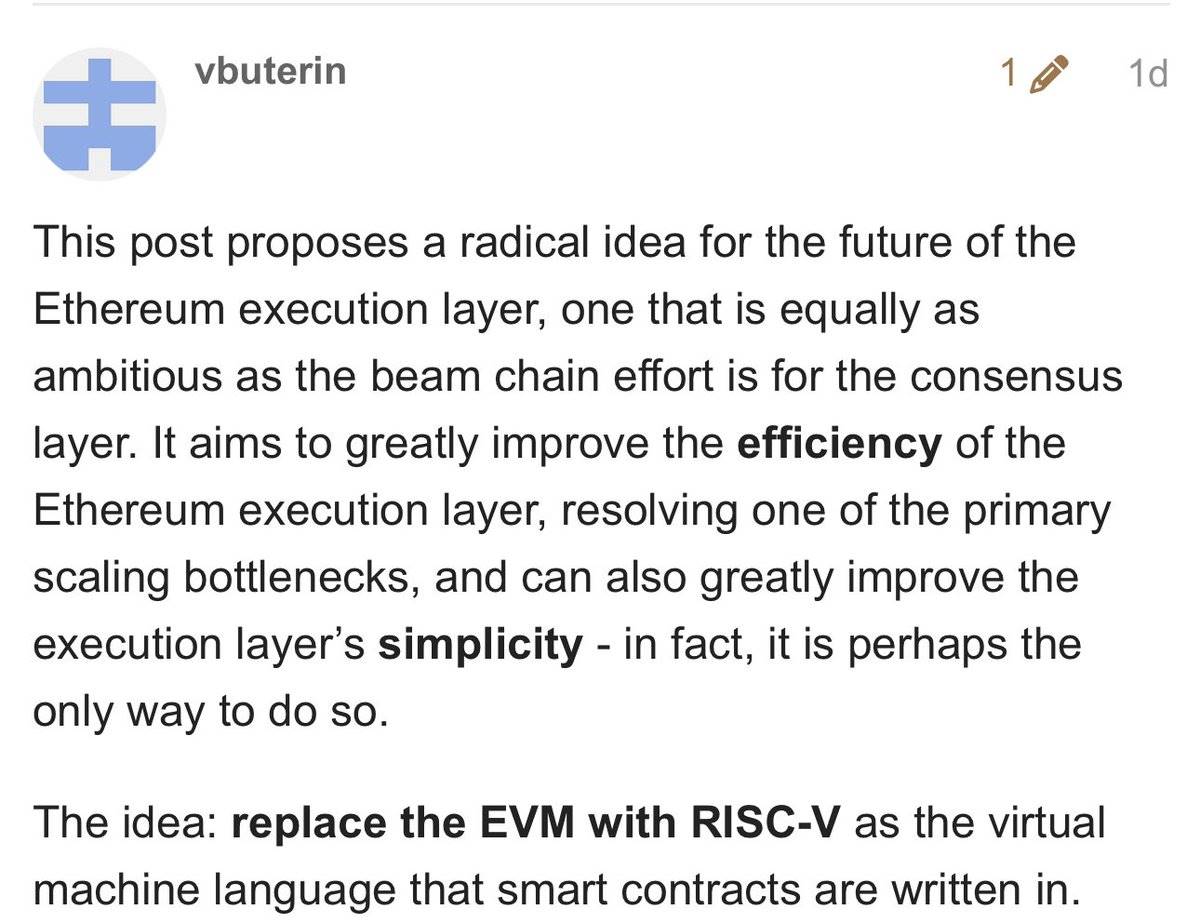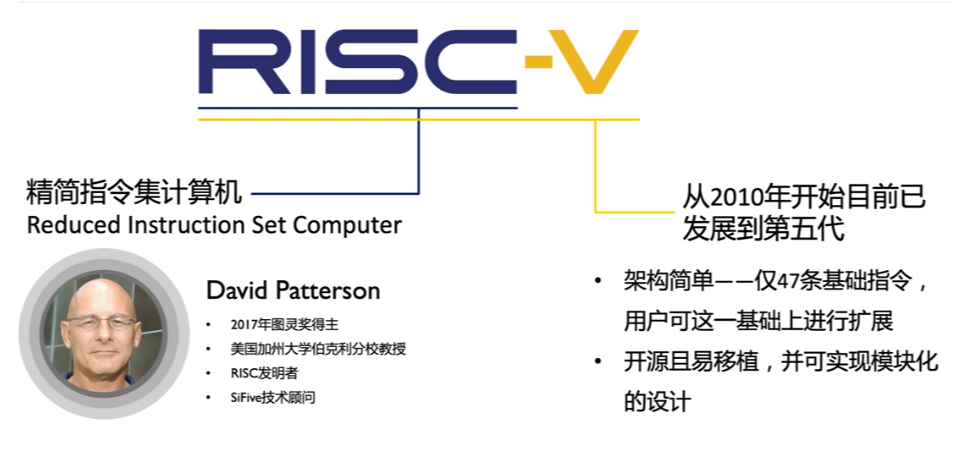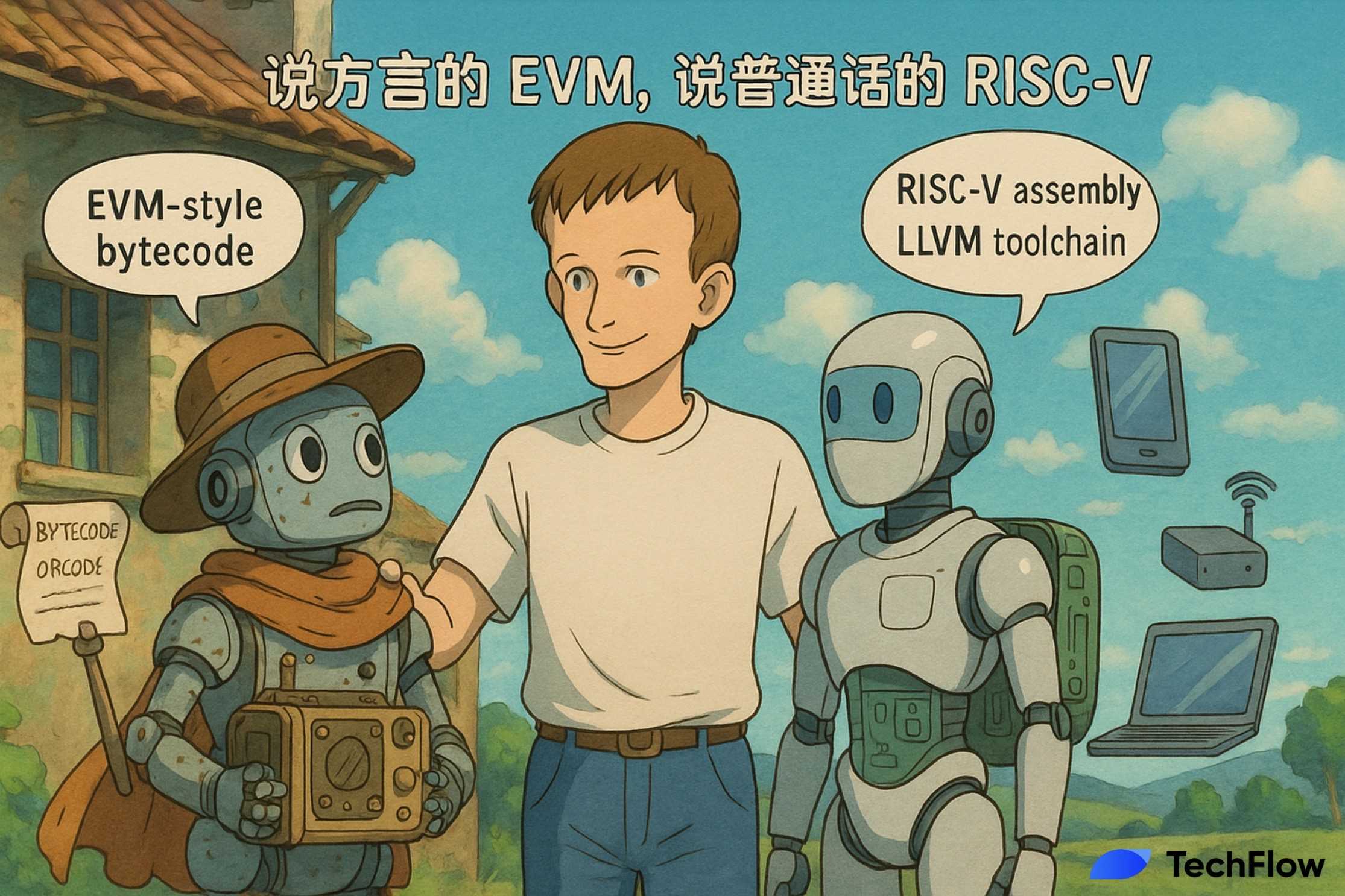Can a Technical Upgrade Save ETH's Price?
Written by: Deep Tide TechFlow
As an editor, I often come across cutting-edge narratives and technologies.
For instance, Vitalik's technical blog frequently presents serious and hardcore technical viewpoints, which various media outlets rush to report on.
However, being able to access this information is one thing, and understanding it is another.
A couple of days ago, Ethereum founder Vitalik proposed a bold idea—to replace Ethereum's core component, the EVM (Ethereum Virtual Machine), with something called RISC-V.

There has been much discussion about this on crypto Twitter in the English-speaking world, but the Chinese community seems less focused on such hardcore and difficult technology.
In any case, it is an undeniable fact that ETH's price is struggling, and the consensus has formed that technical solutions cannot save the "E Guardian."
However, driven by curiosity and a desire to rescue the ETH I currently hold, I took a serious look at the RISC-V proposed by Vitalik and tried to explain it in simple terms, including its changes and potential impacts.
After all, you might still be interested in matters related to ETH.
EVM Speaking Dialect, RISC-V Speaking Mandarin
Let's start with some background knowledge.
First, Ethereum is a blockchain platform, akin to a decentralized "supercomputer." It can run smart contracts, which are automated programs, such as those used for DeFi applications or NFT transactions.
The key point is that Ethereum's smart contracts run on something called the EVM (Ethereum Virtual Machine).
The EVM acts like a translator, converting the code written by developers (for example, smart contracts written in Solidity) into instructions (bytecode) that Ethereum can execute.
The idea is good, and it has been functioning this way for a while.
However, the EVM has a problem: it is a custom system that is not very compatible with mainstream programming languages, leading to low operational efficiency, especially when handling complex tasks, where bottlenecks often occur.
So, what does RISC-V have to do with this?
RISC-V (pronounced "risk-five") is an open-source computer instruction set, somewhat like a "language standard" for computers.
It was developed in 2010 by the University of California, Berkeley, and is now widely used in chips for devices like smartphones, laptops, and sensors. Unlike traditional Intel or ARM chips (which use proprietary instruction sets), RISC-V is completely open-source, allowing anyone to design chips with it, akin to "Linux" in the hardware world.

(Images source: CSDN)
You might be wondering how an instruction set used in hardware chips relates to Ethereum. Why is Vitalik interested in RISC-V?
In simple terms, RISC-V can solve many of the EVM's issues. As mentioned earlier, the EVM is a "translator," but it uses an outdated "dialect" that is incompatible with mainstream programming languages, requiring cumbersome translations every time a smart contract is executed, resulting in frustratingly low efficiency.
RISC-V, on the other hand, is a modern "universal language" that has been adopted by many devices, with mature tools and technologies available. If Ethereum could directly use RISC-V to write smart contracts, it would eliminate the need for constant translation, significantly improving efficiency.

Specifically, RISC-V could be used in Ethereum's "execution layer."
What is the execution layer? It is the part of Ethereum that runs smart contracts, the "core engine." Vitalik's idea is to replace the old engine, EVM, with the new engine, RISC-V, allowing smart contracts to run directly on RISC-V.
In his blog on April 20, 2025, he mentioned that this replacement could enhance Ethereum's execution efficiency by 100 times.
Moreover, RISC-V can better support ZK (zero-knowledge proofs), making it particularly suitable for scaling Ethereum's capacity (for example, in solutions like zk-Rollups).
However, this idea is still just a "proposal," having been put forward only a few days ago.
The community has just begun discussing it. Some people think it's great, while others believe the risks are high and it could complicate the system.
Vitalik himself has stated that this is a long-term plan that may take years to implement. Currently, Ethereum is busy with other upgrades (such as the Pectra upgrade on May 7, which mainly optimizes layer-2 and user experience), so the RISC-V matter is still a long way off, and there won't be any major actions in the short term.
Can Studying Medicine Save Ethereum?
Mr. Lu Xun once said that studying medicine cannot save the Chinese people because the spirit is numb, and physical salvation is meaningless.
Ethereum may also be facing a similar predicament.
Is it feasible to tackle physical performance issues from a technical perspective? If RISC-V is indeed adopted, what impact will it have on Ethereum?
After all, Ethereum is currently a $400 billion ecosystem (with ETH's market cap around $189 billion, plus the value of locked assets), and making such a significant change requires caution.

First, let's discuss the potential benefits of switching to RISC-V. The most significant change would be that Ethereum would become faster. Currently, Ethereum can become particularly sluggish during busy times, especially during peak periods, such as when NFTs were hot, with everyone rushing to buy small avatars, leading to transaction delays and skyrocketing gas fees, proving it to be an expensive chain.
In the long run, switching to RISC-V could also make Ethereum more competitive. Layer 1 solutions like Solana are characterized by their speed and have already captured a significant number of users.
If Ethereum can utilize RISC-V and align with mainstream technologies, developers will find it easier to create new applications (DApps), attracting more users to Ethereum.
From Vitalik's perspective, his goal may be to ensure that Ethereum is not only usable now but can also lead the way for decades to come.
However, switching to RISC-V is not without its problems; the risks are quite significant.
Some older smart contracts may not be compatible with RISC-V, necessitating compatibility solutions. Others worry that while RISC-V is fast, it may not fully meet Ethereum's needs, potentially complicating the system and affecting some current scaling solutions (like Rollups).
Another issue is that developers will need to learn new things. Current developers are accustomed to using EVM for smart contract development, and with the switch to RISC-V, they will need to learn new tools and methods. Some may find this cumbersome and be reluctant to change.
Opinions within the community regarding this proposal are quite divided. Supporters believe it is an important step for Ethereum's future, enabling it to run faster and more cost-effectively. Opponents feel the risks are too high, potentially complicating the system, and suggest that it would be better to optimize the current EVM first.
If I am forced to be an E Guardian while holding ETH, I certainly hope that Vitalik's idea can improve Ethereum and, in turn, boost ETH.
But to be honest, whether a technical upgrade can save ETH's price is hard to say.
After all, the market sometimes does not focus on technology but rather on sentiment.
Nonetheless, the idea of RISC-V is indeed intriguing, indicating that Ethereum is still striving to move forward. If you are also interested in ETH, it might be worth keeping an eye on this matter, as there could be some surprises in the future.

免责声明:本文章仅代表作者个人观点,不代表本平台的立场和观点。本文章仅供信息分享,不构成对任何人的任何投资建议。用户与作者之间的任何争议,与本平台无关。如网页中刊载的文章或图片涉及侵权,请提供相关的权利证明和身份证明发送邮件到support@aicoin.com,本平台相关工作人员将会进行核查。




